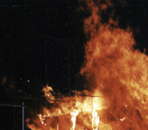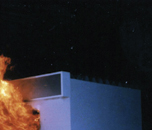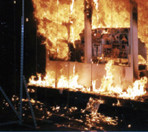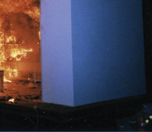|
Fig.1 Full-scale flammability test for a large station shop
|
On the track storey (where tracks or platforms are built) of a building over track space, the amount of combustible material is small compared to other buildings, and the conditions for space closure are also different. The Guidelines for Fire Resistant Design for Buildings over Track Space, promoted mainly by the Railway Technical Research Institute, was enacted in 1992 to promote a reasonable standard of fire resistance design in track storeys. As a result, the non-fire-resistant shielded steel frame structure can now be used in station buildings. However, with the increasing amount of combustible material accompanying station facility diversification and the amendment of the Building Standards Act of 2000, a new technique for fire resistance design in keeping with the new trends is required.
The main source of fire on track storeys has generally been from small shops on platforms. However, because large station shops were not taken into account when the current guidelines were created, reviewed methods to deal with them were added to the guidelines. A full-scale flammability test (Fig.1) was performed to determine the fire properties of large station shops, and a ventilation-based fire model was created in which the heat release rate is determined by the shape of the opening (Fig.2). It has now become possible to evaluate the fire stability of buildings compliant with the current facilities by forecasting the member temperature using this model (Fig.3) and analyzing the elasticity and plasticity of the frame structure.
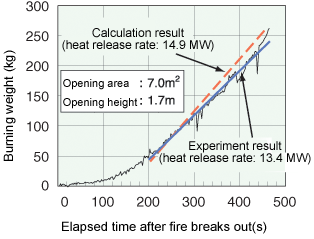
Fig.2 Verification of the heat release rate using a fire model | 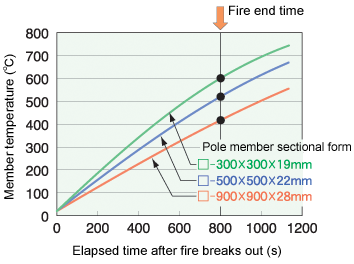
Fig.3 Example of forecasting temperatures in steel frame poles |
|
